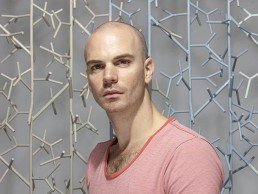
Benjamin Hubert
As part of the Glass is Tomorrow workshop, which took part in this year’s Milan Design Week, the Benjamin Hubert Studio celebrated purity of form through its Beacon range of lamps.
British designer Benjamin Hubert established his London-based studio in 2007 having graduated from Loughborough University in 2006 with a (BA) first class honours in Industrial Design and Technology. Ever since, it has been his passion and the ethos of the studio, which specialises in industrial design across furniture, lighting and other product sectors, to challenge the everyday application of materials, traditions of construction and ideas of context. The studio works on a diverse range of projects including both mass / batch produced consumer products and limited editions / one offs.
The studio also focuses on sustainability as an integrated part of each project, whether it’s creating products that will last a lifetime, both from a quality and durability perspective, or from a recyclability and more holistic infrastructure approach.
Inspiration comes directly from the studio’s network of factories and workshop environments where the products are made, with the brand creating timeless objects that do not respond to trends or fashion but rely on usability analysis, interaction, materiality, sustainability and a process of visual reduction.
Beacon – on show during this year’s Milan Design Week – is a pendant and desk light from Benjamin Hubert, designed as part of the Glass is Tomorrow workshop held recently in Denizli, Turkey, which aims to establish an exchange of knowledge between glass and design professionals across Europe.
Designed to explore how traditional glass working techniques can be adapted to contemporary use in lighting, and how light itself can be used as an integral element to the design, the Beacon lamps celebrate purity of form and comprise two simple and elegant blown glass components – the pendant and desk lamps have the same internal component, but differ in their external component.
The common interior component is hand-blown and then cold-worked using a traditional technique known as battuto, in which the surface of the glass is hand-cut on a girding machine to create a pattern of grindings of variable shape and depth. Light is then projected through the internal component, creating decorative caustics caused by the shadow and highlights of the battuto pattern on the external blown glass component.
The external component of both the pendant and desk lamp is then sandblasted on the interior to better capture the caustic effect and to diffuse the light. There are four different battuto patterns in the Beacon collection, each creating a different pattern of light and shadow.
www.benjaminhubert.co.uk



